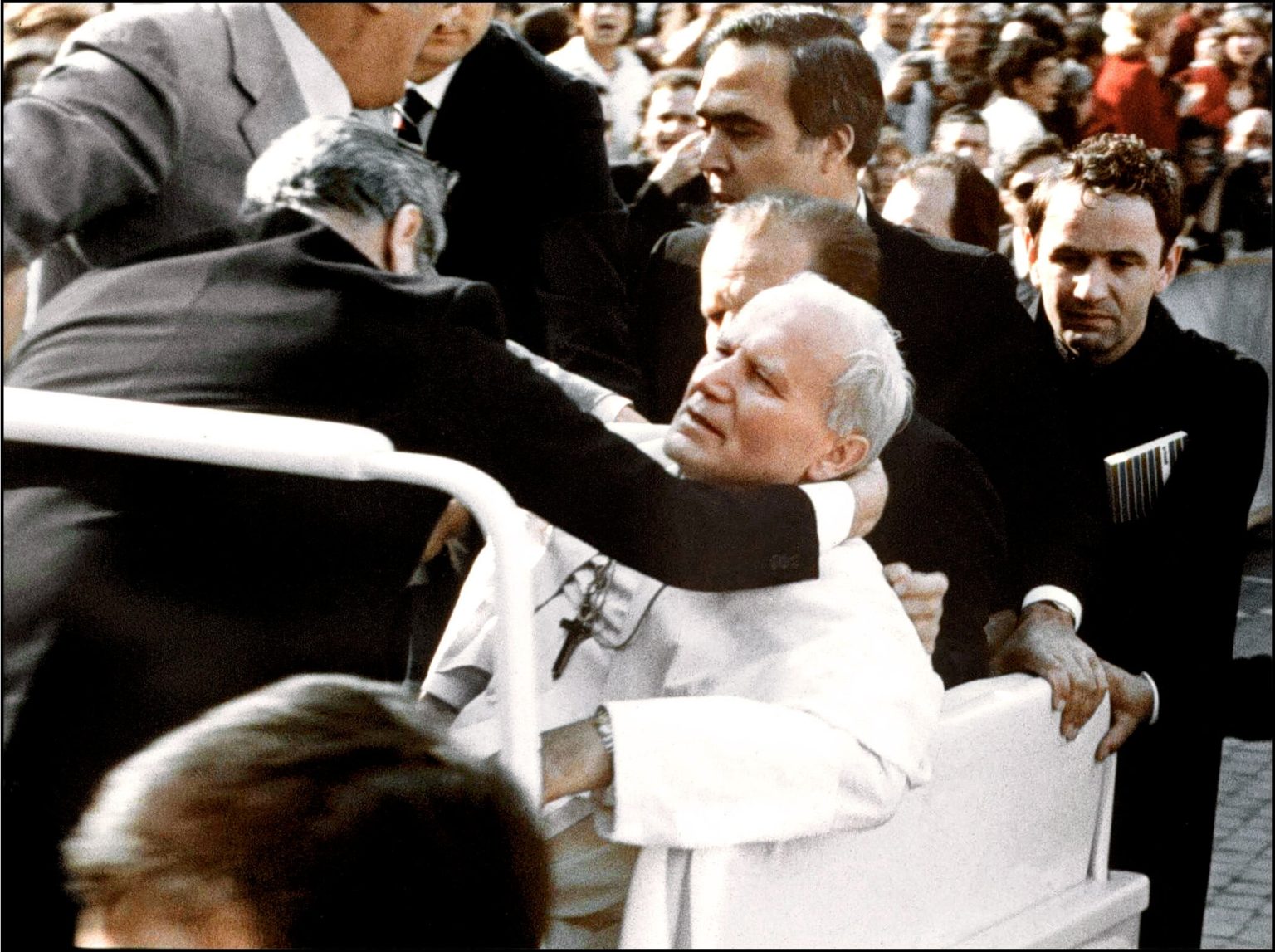Pope John Paul II was shot and nearly killed on May 13, 1981, during his General Audience in St. Peter’s Square. The Turkish gunman Mehmet Ali Ağca fired four times, hitting the pope in the abdomen and left hand, causing him to collapse. Two other women were injured in the attack. Ağca was quickly arrested, and the pope underwent five hours of surgery to save his life at Gemelli Hospital in Rome. The incident marked the first mention of terrorism even in the Vatican, where messages of love, peace, and harmony were always transmitted.
After being released from the hospital in August 1981, the Vatican implemented new security protocols to protect the pope, including the introduction of the popemobile. Ağca was sentenced to life in prison for the assassination attempt on Pope John Paul II. In a remarkable display of forgiveness, the pope met Ağca in prison on Dec. 27, 1983, and forgave him, referring to him as a fellow human being and brother. A photo of their encounter was published on the cover of Time magazine with the headline “Why Forgive?” The motives behind Ağca’s actions remain unclear, as he claimed to be part of a KGB plot.
John Paul II attributed his survival to the Virgin Mary, as he was shot on the Feast of Our Lady of Fatima. During a visit to the Shrine of Fatima in Portugal, the pope thanked Our Lady for sparing his life and offered the bullet that nearly killed him as a gesture of thanks. The bullet was placed in the crown adorning the statue as a symbolic offering. Despite the attempted assassination, Pope John Paul II continued to serve as pope for nearly 24 more years, before passing away in 2005. He was canonized as a saint by Pope Francis in 2014, along with his predecessor, Pope John XIII.
The shooting of Pope John Paul II by Mehmet Ali Ağca has left a lasting impact on history. The incident was a stark reminder of the presence of terrorism even in places like the Vatican, where messages of love and peace have always been paramount. The pope’s forgiveness towards his would-be assassin demonstrated a profound act of mercy and compassion, reflecting his commitment to the teachings of the Catholic faith. The story of forgiveness and redemption between John Paul II and Ağca remains a powerful example of humanity’s capacity for reconciliation and forgiveness, even in the face of violence and tragedy.
The pardon of Ali Ağca by the Italian government, at the request of Pope John Paul II, and his subsequent release from prison in Turkey, marked a significant moment in the aftermath of the assassination attempt. The act of forgiveness by the pope towards his assailant highlighted his unwavering belief in the principles of forgiveness and reconciliation. Despite the traumatic experience of being shot and wounded, John Paul II’s faith and resilience enabled him to overcome the ordeal and continue his papacy with a renewed sense of purpose and determination. The canonization of John Paul II as a saint by Pope Francis in 2014 further solidified his legacy as a revered figure in the Catholic Church.


